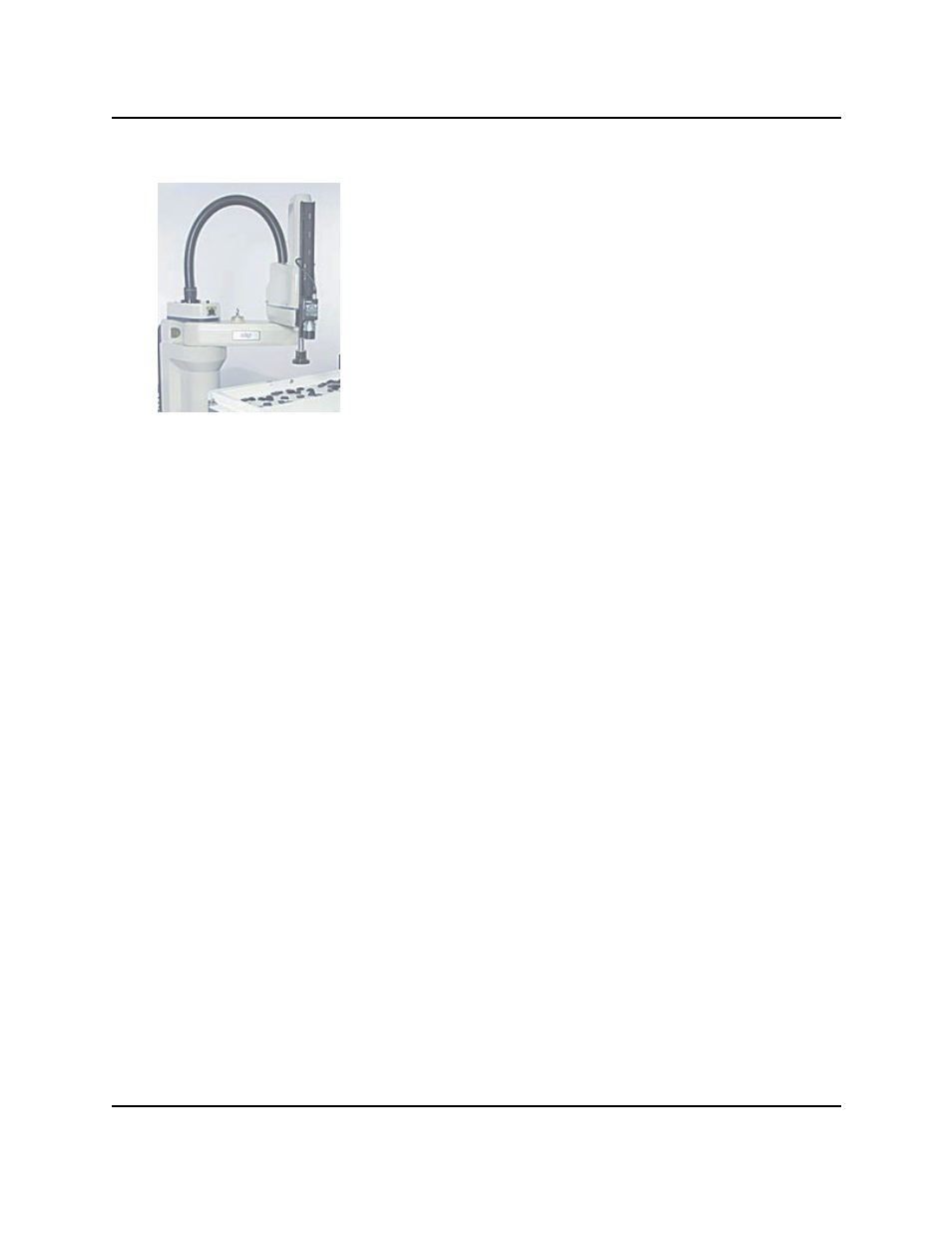Camera height – Adept AdeptSight User Guide User Manual
Page 631

Arm-Mounted Camera
Arm-mounted cameras can have the following issues:
l
The camera moves, so it is exposed to vibration, which can create mechanical issues
with the lens coming loose, connection issues with fatigue on cables, etc.
l
It slows down the process—the robot has to move to the picture-taking position, stop,
take a picture, and then continue. This adds cycle time
l
Arm-mounting is limited to the Adept SCARA robots, Adept Python linear modules,
and joint 6 of Adept Viper robots. Arm-mount camera brackets are available for certain
Adept robots, which can be purchased as an option. See your Adept robot user's guide
for details.
Camera Height
There are three main considerations when determining the camera height from the top sur-
face of the part:
1. Physical considerations: you have to make sure nothing (e.g., the robot or other mov-
ing objects in the cell) will hit the lens.
2. Practical considerations: Mounting the lens too far away is often not practical (e.g.,
mounting it 10 feet away will probably not work); likewise, mounting the lens too
close to the product, even if robot clearance is not an issue, can cause problems. For
example:
l
Lenses less than 25 mm can introduce distortion.
l
The parallax effect increases with small focal length lenses (for tall parts, the
camera sees the sides of the part and not just the top).
l
Variation in the height between product styles can cause issues that are
increased as the camera gets closer to the part surface.
3. Optical considerations: there is a formula (see Focal Length on page 633) which
Camera Height
AdeptSight User's Guide, Version 3.2.x, Updated: 8/23/2012
Page 631
